Acrylic Pointillism, Oil & Coldwax, Mixed Media Original & Custom Fine Art for Your Meditation, Office or Living Spaces - Shop Online or Email for More Information
T (760) 880-8725
Email: studio@craigallenlawver.art
Craig Allen Lawver
16-566 Keaau-Pahoa Rd #188-205 Keaau, Hawaii 96749
JOURNAL : Essay
Mixed Media in Mind
MIXING it UP
Avenues of articulation
When creating art, thoughts take many forms. Mixed media becomes an avenue of articulation. Materials meet shape, convey ideas & artifice visually emerges. I feel, in the best works, aspects of self are fused into what is a physical object. These objects are fashioned, filled with personal history and the many ideas absorbed by an artist over a lifetime. There is no endpoint save death, one would suspect.
Art as a life, is an ever evolving process. In a world filled with wonder, there are endless stumbling blocks in the way of creativity. Least not, a society that likes to keep artists tightly boxed and commoditized. But, there are many paths in life that are poorly light and ill-defined. Exploration is required. No notion exists that I will run out of subjects to explore. Sources of inspiration are vast, experiences are many, life short.
Everything begins with a thought. I think through the making of art and art helps me think. A human experience, widely shared, probably true for as long as we have been placing our marks on cave walls. I find, personally, making art to be a process in which I can organize ideas and put them into a visual framework. I can build on context.
Writing has allowed me to analysis my work from an additional direction. The examining of an object is sharpened when writing about it. The object is visible from both the front and back end of creation. The before and after. Writing can encompass the before, the during and the after parts of creation. In some ways, it remains as much as a mystery to me as painting. In a lot of ways, writing is another of my mixed medias.
I think about old and new projects continuously. Always critical, I question how different works relate. Moreover, where do they fit into my life's larger narrative? Why do I make them? How do I understand what I'm doing and how do you understand it to be? To clarify.
“The history of creation is but a succession of battles between amateurs of genius – inspired heretics – and orthodox professionals.”
– Jacques Barzun: From Dawn to Decadence
I am inspired by science. In its many attempts to interpret the natural world. To unearth the rules. The world is composed of fascinating and complex forms from the micro to macro. In a sublime essence, this is a world rich with wonder and inspiration for the observant. I’m interested in this web of existence. In this fabric, in its mutability and rules.
The art I make begins at the wall. At times that is were I feel I am in the entire process. Up against a wall. Sometimes, I just want to make something and I'm not sure were to go. But, I am fascinated by the tactile and this wall I find myself against has texture.
Sculpture and art that intrudes deep into our physical spaces captivates me. Because of this, I want the works in this area of my creative studies to take up external space. To project dimensionally. In many ways, these multi-media works are informative steppingstones in my pointillist installation and constructed arrangement work. They are designed to be easily lived with, to make me smile.
I read widely. It informs my work. In books, ideas and subjects are multitude. This website is a method of incorporating words and language into my work. Both mine and those of others.
Reading inspires writing, which helps open doors to new ideas. This leads to explorations in various media that incorporate different techniques. It reveals a wandering, searching mind. Some creative endeavors may only occur once, but the need to be released is powerful and a driving motivator.
I make copious notes when I read and put them on 4x6 index cards. Honestly, I would never be able to keep the inspirational sources I come across in any kind of order without them. I write my own ideas down on the same type of card and file them together.
When I write something in my journal, it assumes many iterations. To begin, I often shuffle through my collected quotes. Above all, I look for noted thoughts that fit where mine are at present. Ideas that seem to connect to an something I am grappling with.
I worry about being overly ethereal at times. There is admittedly, a desire to avoid using that same type of art talk that just flies over my head when I read it. If I am left wondering what the artist wants to communicate, what has it achieved?
I always look at any work of art in front of me filled with questions. This is true of my work and the work of others. Similarly, I question how what I have written adds understanding to what I've made. Is there more looking needed, more exploration or research? The answer to that tells me much, but it doesn't always provide clear paths. Should I even let this piece of art out of the studio?
When I am working, I can be intensely focused. I feel the work I've done in pointillism has sharpened my ability to work in specific areas of any painting for a long time. It does helps, that I meditate. But, in fact, it feels as if I am making little progress at times. There is an exactitude in the placing of small dots of color. This has spilled over in other areas I work. But, if not kept in check, the ugly spector of perfectionsim rears it's head.
I take pictures and look for inspiration everywhere. Our library at home is filled with a considerable amount of reference material. All of these are used when I am working or formulating new ideas. The inspiration I am looking for might be anything. For example, colors, textures, patterns or the outlines of a form. The nuance in a fictional story. The smallest detail can provide a creative point from which to launch.
These works bridge the divide between 2 and 3-dimensional painting and sculpture. They're tactile and feel like they are in the room. Some of the cradled panels are made with a 3" depth. These are built on hardwoods, hardboards or birch. I incorporate fine art acrylics and mediums while exploring coldwax and encaustic. In essence, I seek to transcend boundaries existing between individual disciplines and play along the merging edges.
I am an artist, and I am someone who enjoys looking at art. For this reason, I love to discover other artists and their methods of expression. I enjoy seeing what avenues are being followed by others, how artists working face their challenges. Being observant of this, can be insightful when approaching problems in my work.
I have conversations with my work. I often wonder about the conversations others may have with their art. Consequently, I am aware the marks I leave behind are left to be read. If there is art in a room when a person enters, optimally they would enter alone. Does a dialogue automatically start?
If there is no artist or gallerist, curator or critic’s words, in front of you to shape your thoughts, they have nowhere else to emerge from than the fertile valley of your mind. The nature of an artwork becomes contemplative. Life stories and history can add complexity and depth, but it can be relegated to background noise.
I strive to bring a unique perspective to any creative challenge. As a pointillist, I am accustomed to looking at things in extreme detail. Searching for the interconnectedness of all things.
As stated, I begin with a cradled panel. It is prepared with multiple coats of high-quality primer and/or acrylic gesso. Everything begins with base coats. From here, I enjoy building up layers of decorative acrylic-based plasters or paint glazes. I have begun with a printed reproduction of a photo, mounted and sealed it to a panel, and then worked over that with paint and plaster.
I use a variety of plasters, paints, stencils, glazes and mediums. Some materials I use have been specially formulated for the high-end decorative and faux painting industry. Its fascinating how much like more traditional art supplies they behave. As such, I use different product lines, and for different reasons. Fine artist acrylic paints, textural materials and other media are also on the palette. I search for corporate cross-overs. ‘Golden Paints’ have a great line of materials under the label ‘Proceed’.
Since I use a variety of mediums and products, I use a variety of tools. I use trowels of different sizes, makes and configurations, and a variety of brushes designed for decorative work. Many are tailored after brushes you might find in a traditional art store and some more specialized. And yet, just a tore up piece of sea sponge can be used as a type of brush and may be enough. The limits for any tools use, is in the artist’s mind.
At times, it is the simple matter of adopting something from a decorative painting tradition and looking for a fine art application. That also works in reverse. I am always considering how materials or tools are used by craftsman. How these tools can be adopted and used for decorative or fine work. There is little limit to the possibilities. I am reminded of the many artists over the centuries who have painted walls or ceilings. Embraced texture, boldness and experimentation.

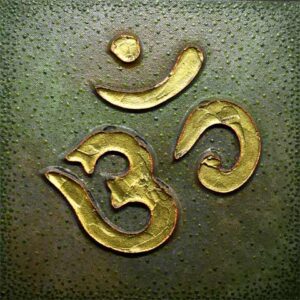
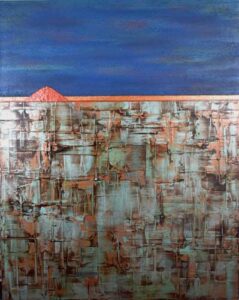

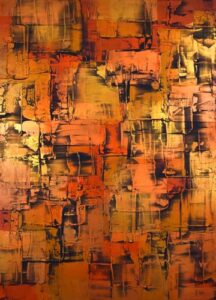
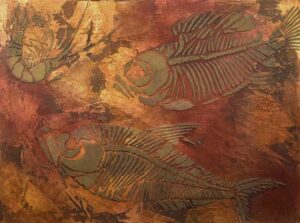
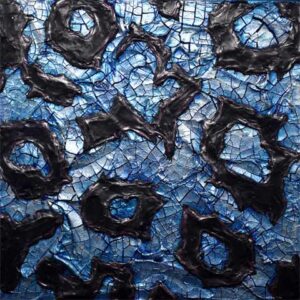
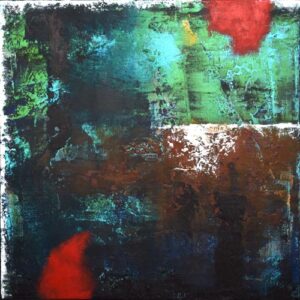

Facebook: Craig Allen Lawver Art